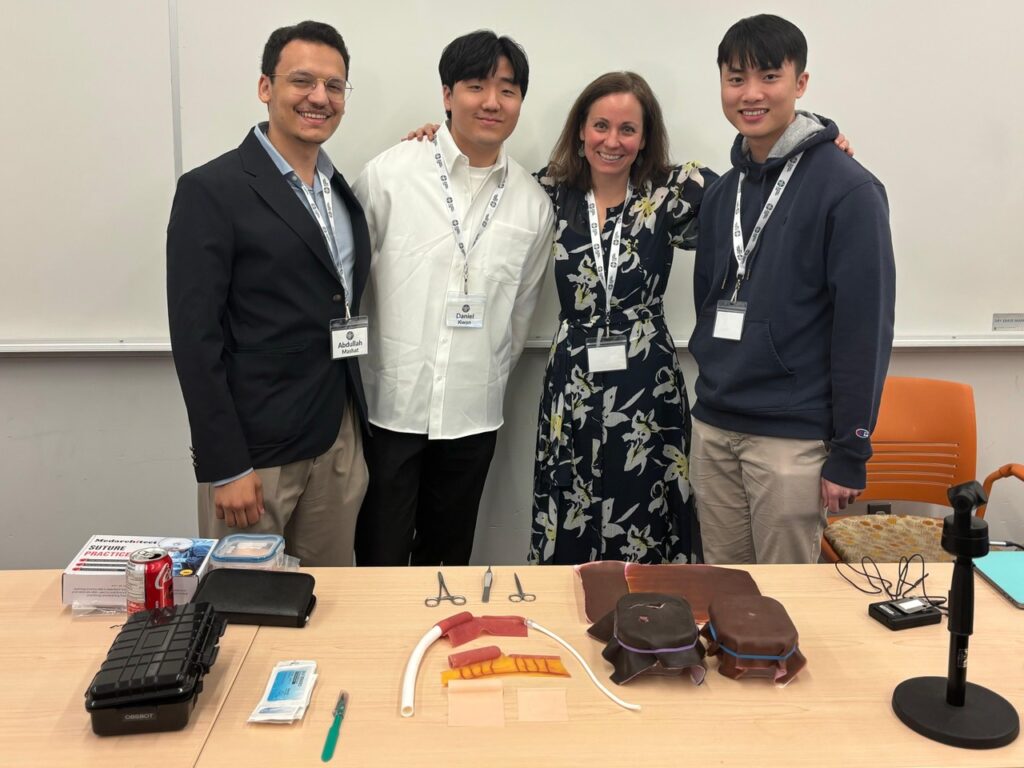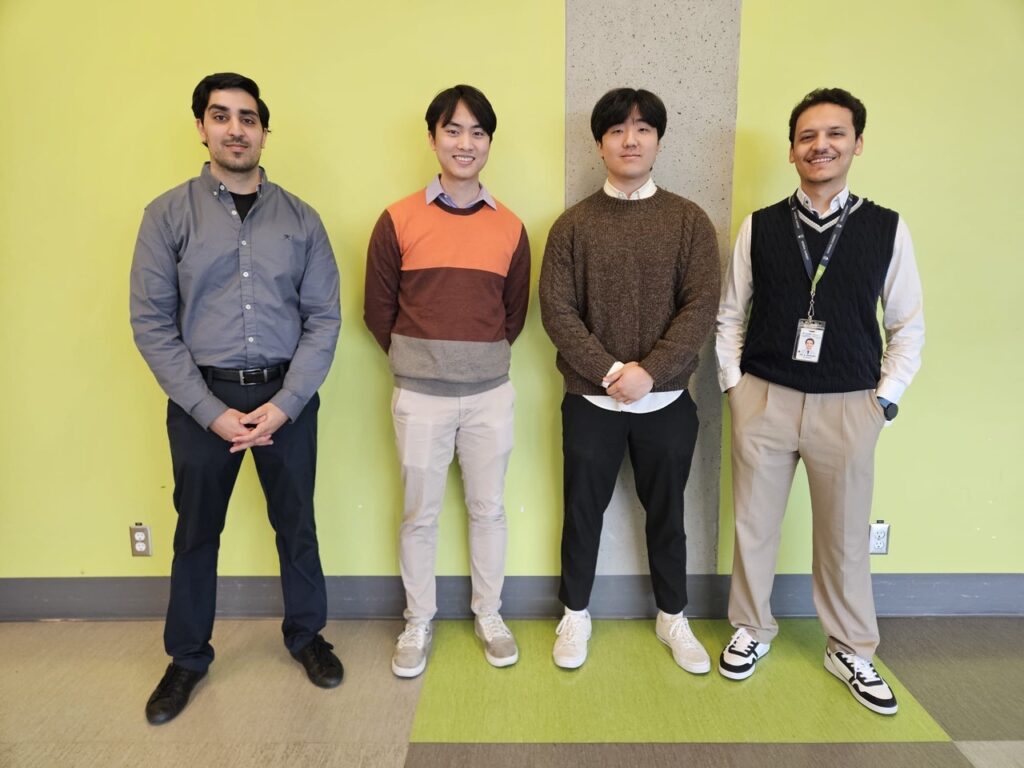Approximately 1 in 1,000 newborns are born with a medical condition called Jejunoileal Atresia, which is a congenital defect in which babies are born with a mechanical obstruction in the small bowel. This condition requires surgery immediately, but since it’s rare, surgeons, particularly in low resources settings, do not have an opportunity to practice this surgery before performing it on patients.

A team from The School of Biomedical Engineering’s (SBME) Engineers in Scrubs (EiS) program was recently tasked by one of the clinical partners, Dr. Shahrzad Joharifard from BC Children’s Hospital (BCCH), to create a simulator for surgical practitioners in low resource settings to practice providing treatment for Jejunoileal Atresia. Engineers in Scrubs teaches biomedical engineers to navigate the interfaces between engineering and medical research, clinical practice, and product development, making this challenge a perfect fit for the program’s objective.
The interdisciplinary EiS team, consisting of four team members with diverse research and educational backgrounds: Ajay Banga (BASc + MEng Biomedical Engineering), Daniel Kwon (Physiology & Nutritional Sciences and MEng Biomedical Engineering), Dr. Abdullah Mashat (MD General Surgery Resident) and Ryan Yeung (BASc + MASc Biomedical Engineering) met with Dr. Joharifard to discuss the project criteria and conduct brainstorming sessions. From those sessions, the team developed several ideas but decided that a physical surgical simulator was the best option. Using their diverse skill set, and with input from the EiS professors, teaching assistants, and pediatric surgeons from UBC’s Global Surgery Lab, the team developed a high-fidelity, portable, modular, and low-cost physical simulator for surgeons. They completed a month of prototyping with the most recent version being used at the BCCH pediatric surgical boot camp.
“My experience working with the Engineers in Scrubs was phenomenal. Our team was comprised of three biomedical engineers, a surgery resident, and myself. We each brought unique insights and skills to the table and the spirit of collaboration was exceptional. The students were independent, resourceful, and innovative in finding solutions to the design problems we encountered along the way. Ultimately, we have designed a very low-cost but high fidelity simulator that can train surgeons on how to perform a neonatal laparotomy, bowel anastomosis, and enterostomy – a collection of life saving skills for babies worldwide,” comments Dr. Joharifard.

EiS is the first program of its kind in Canada and is a big draw for students who are planning to attend grad school. “I moved to UBC for grad school because of the unique opportunity to participate in Engineers in Scrubs and projects that make a difference in the healthcare sphere. Working on this project has inspired me to pursue work in a clinical setting,” comments Daniel Kwon.
The product is in validation stages, but has already gained attention, recently receiving the SBME Trainee Research award which is a $15,000 grant for facilitating projects that have strong collaboration between different labs. Dr. Joharifard is planning to use the simulator for a training program that is run in South Sudan.
“It is rewarding to see this product make an impact in the world,” comments Ryan Yeung, “Seeing Dr. Joharifard and other clinicians start to use and test this product is incredible.”